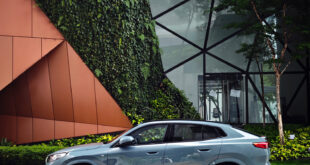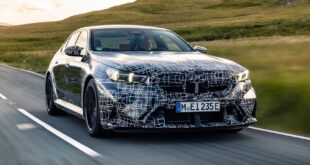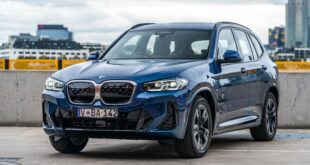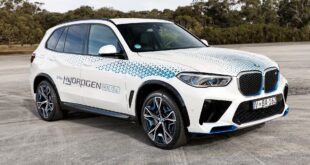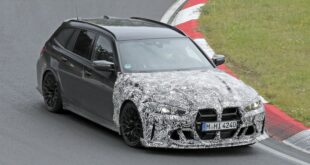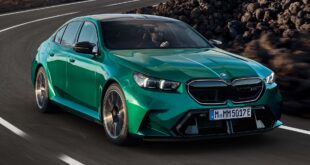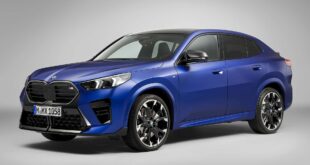 Top Gear gets their hands on the Alpina B3 BiTurbo and reports their thoughts about the vehicle. It is powered by a 3.0-liter, twin-turbo, straight-six engine delivering 410 horsepower (310 kW) between 5,500 rpm and 6,250 rpm, and 598 Nm of torque (442 lb-ft) at 3000 rpm. The transmission of choice is a ZF eight-speed automatic. The numbers of the vehicle is quite impressive: runs from 0-62 mph (0-100 km/h) in 4.2 seconds, reaches a top speed of 190 mph (306 km/h), and 7.6 liters / 100 km (Â 30.9 mpg) fuel consumption. But how well does it perform? Learn more on the excerpt below:
Top Gear gets their hands on the Alpina B3 BiTurbo and reports their thoughts about the vehicle. It is powered by a 3.0-liter, twin-turbo, straight-six engine delivering 410 horsepower (310 kW) between 5,500 rpm and 6,250 rpm, and 598 Nm of torque (442 lb-ft) at 3000 rpm. The transmission of choice is a ZF eight-speed automatic. The numbers of the vehicle is quite impressive: runs from 0-62 mph (0-100 km/h) in 4.2 seconds, reaches a top speed of 190 mph (306 km/h), and 7.6 liters / 100 km (Â 30.9 mpg) fuel consumption. But how well does it perform? Learn more on the excerpt below:
But the B3 must be pretty much as fast as an M3, isn’t it?
I reckon it’s faster. It is on paper, with a claimed 0-62mph of 4.2secs and a non-limited top speed of 190mph. And while the turbocharged motor might not have the sparkling response of the M3′s naturally aspirated V8, it makes up for it with a massively forceful mid-range that’s more useful and exploitable in everyday driving. It’s a perfectly tractable, well mannered and smooth engine and if it wasn’t for the straight six’s gorgeous exhaust fizz on start-up, you wouldn’t think the B3 was anything other than a badge n’ wheel upgrade.
But it’s an auto isn’t it?
It is, but not only is it the superb ZF eight speeder, but it suits the car’s more relaxed demeanour almost perfectly. Almost perfectly because I don’t think the software overlap between Alpina and BMW has been perfectly matched. If you let it take care of its own affairs, it can hunt a little – it’s as if the BMW genes want to change up to bigger gears, while the Alpina genes demand lower, and they wind up having a gentle tussle. But you can override that by using manual shifts, operated by little nipple buttons on the back of the steering wheel. Personally I’d prefer paddles, but this is the way Alpina has always done it and they work perfectly well.
Anything been done to the suspension?
Masses, including a strengthened rear axle, driveshafts and differential, plus Alpina’s own adaptive suspension settings and Eibach springs that are a massive 45 per cent stiffer than standard. That’s a vast change. The wheels are 20s and run more negative camber, too. So how in god’s name has Alpina made it ride so well? Not even Jaguar can make big wheels deliver such compliance and suppleness. It’s staggering. Yet in terms of handling the uprated suspension delivers everything you could hope and more besides. It’s a delight to drive, pure and simple, a step ahead of the standard BMW chassis.
 BMW.SG | BMW Singapore Owners Community The Ultimate BMW Community – Established Since 2001
BMW.SG | BMW Singapore Owners Community The Ultimate BMW Community – Established Since 2001


